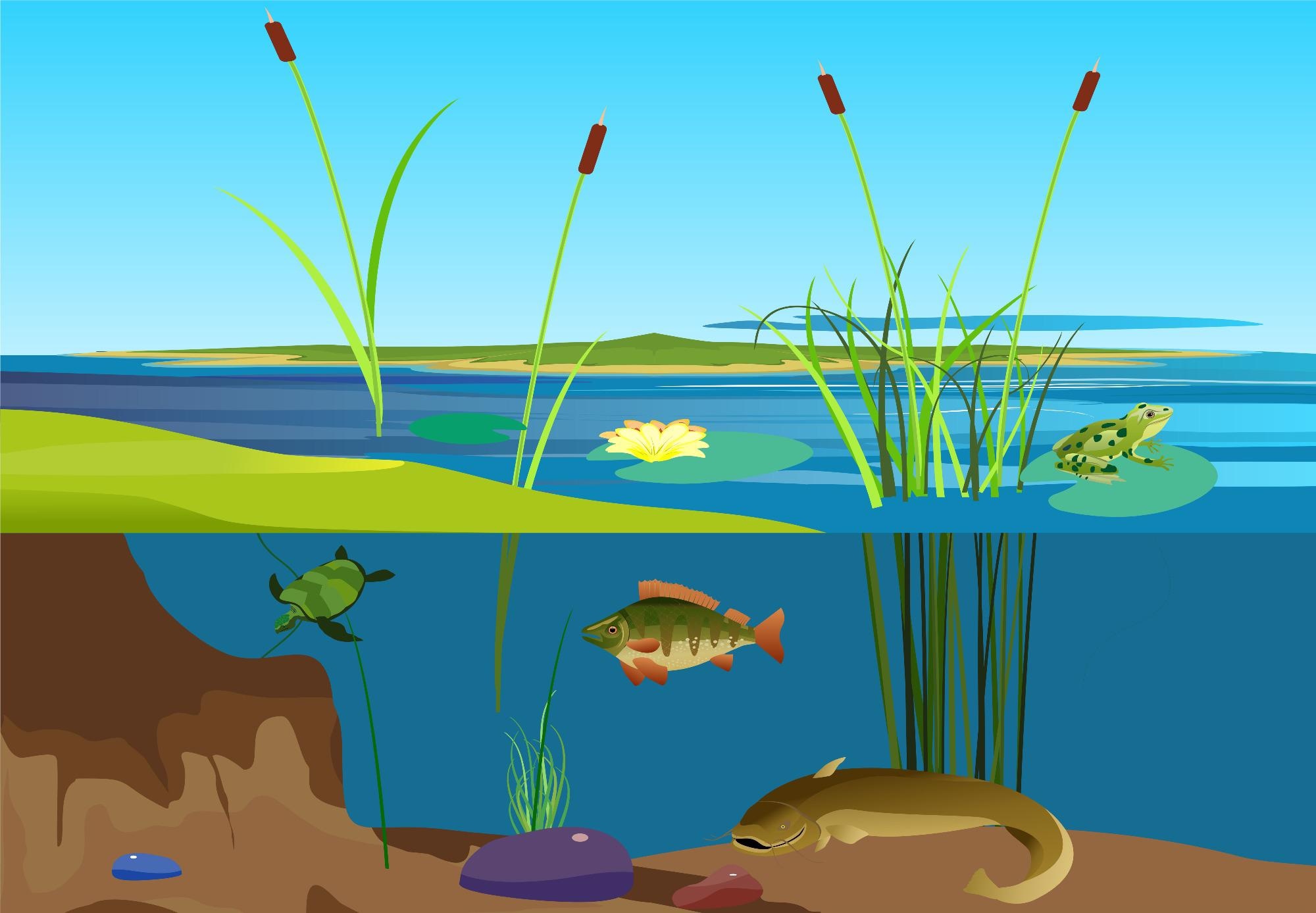Scientists at the Chinese Academy of Sciences have demonstrated that increased temperatures in shallow lakes induce a shift from clear water conditions dominated by macrophytes to turbid (cloudy or disturbed) conditions. This leads to the loss of important ecosystem functions.

Image Credit: Shutterstock.com/ Baurz1973
This regime shift is due to changes in the behaviors of juvenile common carp (Cyprinus Carpio), a benthivorous (bottom-feeding) fish.
Environmental stressors such as eutrophication are contributing to the decline of macrophyte biomasses in shallow lakes. Benthivorous fish increase in numbers during eutrophication, increasing sediment disturbance (and turbidity) at the bottom of lakes. This has a detrimental effect on phytoplankton, periphyton, and macrophytes.
A Brief Explanation of Eutrophication
Macrophytes are aquatic plants that are large enough to be seen with the naked eye. They may be floating, submerged or emergent. They are a key component of the aquatic food chain and may also provide cover for such aquatic life, as well as produce oxygen. They also affect soil chemistry at the bottom of lakes and slow the flow of water, thus trapping sediments and pollutants. Some macrophytes can even absorb these pollutants into their tissue.
Eutrophication occurs when growth elements required in photosynthesis - such as sunlight, fertilizers and carbon dioxide - are present in excess. This naturally occurs in lakes as they fill with sediments over the centuries, but human activities have accelerated this process dramatically. Thus, discharges of phosphorus, nitrogen and other elements into aquatic ecosystems have contributed to the decline of water quality and fisheries.
Floating-leaved macrophytes are not affected by the shading caused by phytoplankton (microorganisms that produce oxygen through photosynthesis), periphyton (mixtures of cyanobacteria, algae and other organisms), and suspended sediment. Submerged macrophytes, however, are affected by the increased turbidity caused by an abundance of these organisms - itself linked to eutrophication.
Further, as these algal blooms die, increased microbial decomposition depletes the water-dissolved oxygen resulting in a hypoxic (oxygen-poor) environment that is unable to support aquatic organisms.
The Effects of Warming on Macrophyte Growth
The Chinese scientists studied the combined effects of warming on the behaviors of benthivorous fish, floating-leaved and submerged macrophytes, and water turbidity.
Common floating-leaved water chestnut (Trapa Bispinosa) and curly-leafed pondweed (Potamogeton Crispus) were used as model macrophyte species. Common carp (Cyprinus Carpio) modeled benthivorus fish - i.e., fish that feed at the bottom of lakes. It is a freshwater fish found in most regions of the world.
The team built 24 insulated mesocosms - 2500 liters in volume, 1.5 m in diameter, and 1.4 m in height each - to simulate a shallow lake ecosystem. Each mesocosm was filled with 10 cm of sediment and 1800 liters of water. A heating element controlled by a computer was fitted to each mesocosm. The water temperature was increased by 4.5 °C based on estimates of temperature rises at the end of the century.
Structural equation models were used to model the effects of warming and benthivorous fish on macrophyte, phytoplankton and periphyton populations, as well as water turbidity. This showed that warming and carp populations affected the abundance of macrophytes both directly and indirectly.
In the absence of carp, warming had a negligible effect on phytoplankton populations, with competition for nutrients and light with macrophytes being more important. The presence of carp significantly reduced the submerged macrophyte population. This was most likely the result of increased turbidity due to more sediment being disturbed by the fish and their predation on zooplankton (i.e., less phytoplankton being eaten by zooplankton).
This Chinese study is the first experimental evidence of a shift in the clear water conditions found in shallow lakes induced by an increase in water temperature. Thus, in an increasingly warming global environment, it may be beneficial to control benthivorous fish populations in shallow lakes.
References and Further Reading
Xu, J., et al., (2021) Warming alters juvenile carp effects on macrophytes resulting in a shift to turbid conditions in freshwater mesocosms. Journal of Applied Ecology, [online] Available at: https://besjournals.onlinelibrary.wiley.com/doi/epdf/10.1111/1365-2664.14040
Disclaimer: The views expressed here are those of the author expressed in their private capacity and do not necessarily represent the views of AZoM.com Limited T/A AZoNetwork the owner and operator of this website. This disclaimer forms part of the Terms and conditions of use of this website.